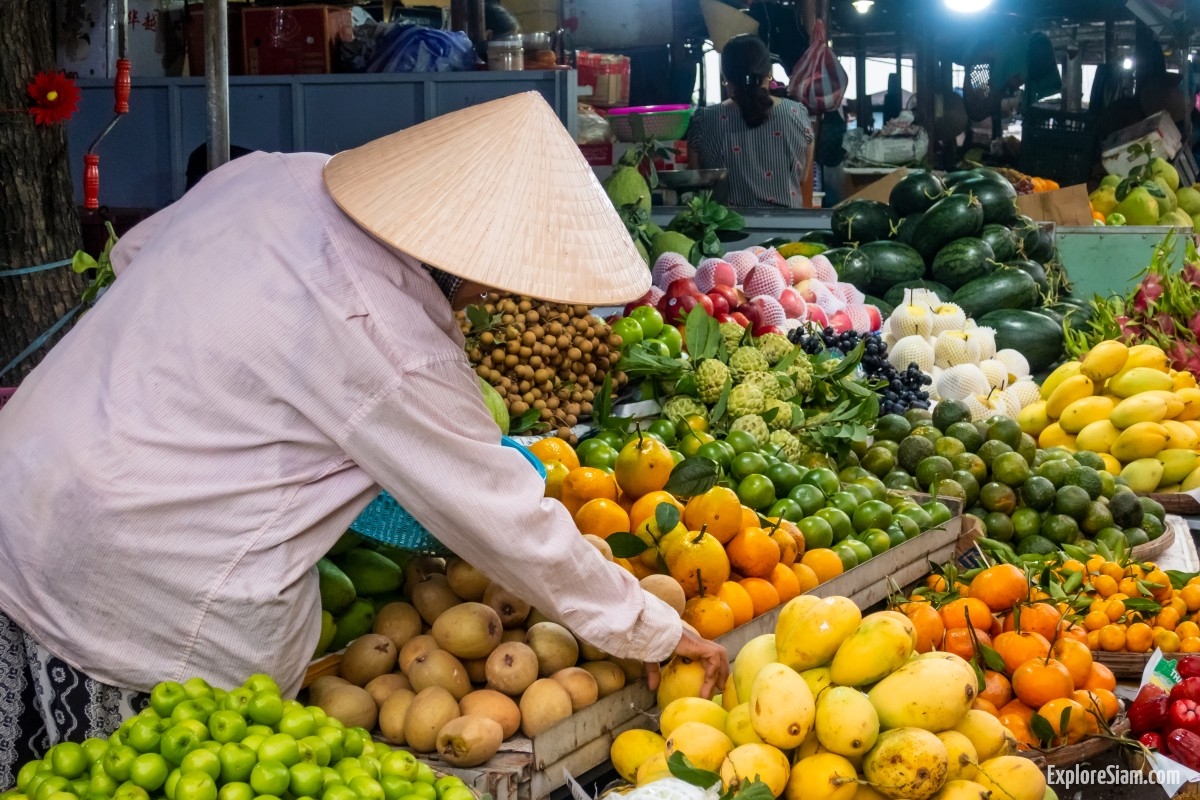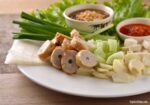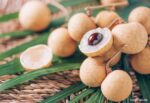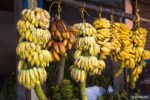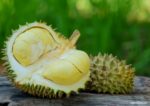Vietnam, with its diverse geography and climate, is home to a wide variety of exotic fruits that are both delicious and nutritious. From the tropical Mekong Delta to the cooler highlands, each region of Vietnam produces unique fruits that are an essential part of the country’s cuisine and culture. Many of these fruits are enjoyed fresh, while others are used in cooking, drinks, and desserts. Whether you are exploring the bustling markets of Ho Chi Minh City or the tranquil orchards of the countryside, the abundance of fruits in Vietnam is sure to captivate your senses. In this article, we will take a closer look at 25 of the most popular edible fruits in Vietnam, exploring their flavors, uses, and health benefits.
The Importance of Fruits in Vietnamese Cuisine
Fruits play a central role in Vietnamese food culture, often consumed as snacks, desserts, or refreshing beverages. They are not only enjoyed for their taste but also for their health benefits. Many Vietnamese fruits are rich in vitamins, minerals, and antioxidants, making them an essential part of a balanced diet. Fruits are also deeply embedded in the social and cultural fabric of Vietnam. They are commonly offered during festivals, used in religious offerings, and shared among family and friends. In rural areas, fruit farming is a major source of livelihood, with many communities depending on the cultivation of fruits for their income.
Seasonality and Regional Differences
The seasonality of fruits in Vietnam varies depending on the region. While some fruits are available year-round, others are seasonal and tied to specific times of the year. For example, tropical fruits like durian and rambutan thrive in the hot and humid south, while temperate fruits like apples and pears are more common in the cooler northern regions. Each region of Vietnam has its own specialties, and exploring the local fruits is a great way to experience the diversity of the country’s agriculture. Now, let’s dive into the top 25 edible fruits of Vietnam.
1. Durian (Sầu Riêng)
Durian is known as the “king of fruits” and is famous for its strong smell, which can be off-putting to some but delightful to others. The large, spiky fruit has a thick outer shell that protects its soft, creamy flesh inside. The flavor of durian is rich and custard-like, with a unique blend of sweet and savory notes. In Vietnam, durian is grown mainly in the southern regions, especially in the Mekong Delta. It is typically eaten fresh, but it is also used in a variety of desserts, such as durian ice cream and cakes. Despite its polarizing aroma, durian is packed with nutrients, including healthy fats, vitamins, and antioxidants. It is believed to have energizing properties and is often enjoyed as a snack or dessert during the hot summer months.
2. Mango (Xoài)
Mangoes are among the most popular and versatile fruits in Vietnam. They come in various varieties, ranging from small, tart green mangoes to large, sweet golden ones. Mangoes are enjoyed in many different ways in Vietnam: ripe and juicy as a snack, blended into smoothies, or paired with sticky rice in the famous Vietnamese dessert, “xôi xoài.” Green mangoes, on the other hand, are often eaten with salt, chili, and shrimp paste, offering a tangy and spicy treat. Mangoes are an excellent source of vitamins A and C, which are essential for maintaining healthy skin and boosting the immune system. The fruit is also high in fiber, which aids digestion. In Vietnam, mangoes are grown in both the northern and southern regions, but they thrive especially well in the tropical climate of the Mekong Delta.
3. Dragon Fruit (Thanh Long)
Dragon fruit is one of the most visually striking fruits in Vietnam, with its vibrant pink skin and speckled white or red flesh. Native to Central and South America, dragon fruit was introduced to Vietnam, where it quickly became a staple crop, especially in the southern provinces. The flavor of dragon fruit is mildly sweet, with a refreshing, slightly tangy taste. It is commonly eaten fresh, often sliced into cubes and added to fruit salads or served as a decorative addition to fruit platters. Dragon fruit is low in calories but high in fiber, making it an excellent choice for those looking to maintain a healthy diet. It is also rich in antioxidants, particularly vitamin C, which helps boost the immune system and improve skin health. Dragon fruit is widely available in Vietnam and is particularly popular during the hot summer months.
4. Mangosteen (Măng Cụt)
Mangosteen, known as the “queen of fruits,” is highly prized for its juicy, sweet-tart flavor. The fruit has a thick, purple rind that encloses segments of soft, white flesh, which are both fragrant and delicious. Mangosteens are typically eaten fresh and are most abundant during the summer months in Vietnam. The fruit is grown in the southern provinces, where the warm, humid climate provides ideal growing conditions. Mangosteen is not only delicious but also packed with health benefits. It is rich in antioxidants, particularly xanthones, which have anti-inflammatory and anti-cancer properties. The fruit is also a good source of vitamin C, which helps support the immune system. In Vietnamese cuisine, mangosteen is often enjoyed on its own or used in fruit salads and desserts.
5. Rambutan (Chôm Chôm)
Rambutan is a small, round fruit covered in soft, hair-like spines, giving it a unique and somewhat exotic appearance. The fruit is closely related to the lychee and has a similarly sweet, translucent flesh. Rambutans are widely cultivated in Vietnam, particularly in the southern regions, where they are harvested during the rainy season. The flavor of rambutan is mildly sweet with a hint of tartness, and the texture is juicy and refreshing. Rambutan is typically eaten fresh, either on its own or as part of a fruit platter. It is a good source of vitamin C, which helps boost the immune system and improve skin health. The fruit is also rich in dietary fiber, which aids in digestion. In Vietnamese markets, rambutan is often sold by the bunch and is a popular snack during the hot and humid summer months.
6. Lychee (Vải Thiều)
Lychee is one of the most beloved fruits in Vietnam, especially in the northern provinces, where it is grown in abundance. The fruit has a rough, red skin that encloses juicy, translucent flesh with a sweet, fragrant flavor. Lychee is typically eaten fresh and is often used in desserts, drinks, and even savory dishes. In Vietnam, lychees are particularly popular during the summer months, when they are harvested in large quantities. The fruit is rich in vitamin C, which helps boost the immune system and protect the body against infections. Lychee is also a good source of antioxidants, which help fight free radicals and reduce the risk of chronic diseases. In addition to its delicious taste, lychee is prized for its cooling properties, making it a refreshing treat during the hot summer days.
7. Longan (Nhãn)
Longan, often referred to as the “dragon’s eye” due to its appearance, is a small, round fruit with a thin, brown shell and translucent, sweet flesh. It is closely related to the lychee and has a similar flavor, though it is slightly less fragrant. Longans are widely grown in Vietnam, particularly in the northern provinces, where they are harvested during the late summer months. The fruit is typically eaten fresh but is also commonly dried and used in traditional Vietnamese desserts and soups. Longan is rich in vitamin C and antioxidants, which help support the immune system and protect the body from oxidative stress. It is also believed to have calming properties and is often consumed to help alleviate anxiety and improve sleep. Longan is a popular snack in Vietnam, especially during the fruit’s peak season.
8. Banana (Chuối)
Bananas are a year-round staple in Vietnam, and they come in a variety of shapes, sizes, and flavors. From small, sweet varieties like “chuối ngự” to larger, starchier types like “chuối sáp,” bananas are enjoyed in many different ways in Vietnam. They are often eaten fresh as a snack, used in desserts like banana cakes or chè (sweet soup), or fried and served as a street food snack. Bananas are rich in potassium, which is essential for maintaining healthy blood pressure and heart function. They are also a good source of dietary fiber, which aids in digestion. In addition to their nutritional benefits, bananas are a versatile fruit that can be used in both sweet and savory dishes. In Vietnamese culture, bananas are also often used in religious offerings and are a symbol of prosperity and good fortune.
9. Papaya (Đu Đủ)
Papayas are widely grown in Vietnam and are enjoyed both when ripe and unripe. When ripe, papayas have a sweet, juicy flesh that is perfect for fruit salads or smoothies. The bright orange flesh is rich in vitamins A and C, which are important for maintaining healthy skin and boosting the immune system. Papayas are also high in digestive enzymes, particularly papain, which helps break down proteins and aids in digestion. Unripe papayas, on the other hand, are often used in savory dishes like green papaya salad, where they provide a crunchy texture and a mild flavor. In Vietnam, papayas are a popular ingredient in both traditional and modern cuisine. They are often served as a refreshing dessert, garnished with lime or chili powder for an added kick.
10. Guava (Ổi)
Guava is a common fruit in Vietnam, known for its crisp texture and mildly sweet flavor. The fruit is typically eaten fresh, often with a sprinkle of salt and chili to enhance its natural flavor. Guava is also commonly used in juices, smoothies, and fruit salads. The fruit is rich in vitamin C, which helps boost the immune system and protect the body from infections. Guava is also high in dietary fiber, making it an excellent fruit for promoting healthy digestion. In Vietnamese markets, guavas are often sold whole, with the skin on, and can be eaten in their entirety. The fruit’s seeds are also edible, though they are often discarded in favor of the flesh. Guavas are available year-round in Vietnam and are particularly popular as a street food snack.
11. Jackfruit (Mít)
Jackfruit is one of the largest fruits in the world and is known for its sweet, yellow flesh that has a unique texture and flavor. In Vietnam, jackfruit is widely grown in the southern regions, where it is harvested during the summer months. The fruit is typically eaten fresh, but it is also used in a variety of dishes, including desserts like chè and savory dishes like jackfruit salad. Jackfruit is rich in vitamins A and C, as well as antioxidants, which help protect the body from oxidative stress and support healthy skin and immune function. The fruit is also a good source of dietary fiber, which aids in digestion. In addition to its nutritional benefits, jackfruit is valued for its versatility, as both the flesh and seeds can be used in cooking. The seeds, when boiled or roasted, have a nutty flavor and are often eaten as a snack.
12. Starfruit (Khế)
Starfruit, named for its distinctive star-shaped cross-sections, is a unique and refreshing fruit with a slightly tart flavor. In Vietnam, starfruit is often eaten fresh or used in salads, soups, and beverages. The fruit’s crisp texture and mild acidity make it a versatile ingredient in both sweet and savory dishes. Starfruit is rich in vitamin C, which helps boost the immune system and promote healthy skin. It is also low in calories and high in water content, making it a hydrating and nutritious snack. In Vietnamese cuisine, starfruit is often used as a garnish for seafood dishes or added to pickles for a tangy flavor. The fruit is available year-round in Vietnam, though it is most abundant during the rainy season.
13. Sapodilla (Hồng Xiêm)
Sapodilla is a brown-skinned fruit with a sweet, grainy flesh that has a flavor reminiscent of brown sugar and pears. The fruit is widely grown in Vietnam, particularly in the southern provinces, where it is harvested during the late summer and early autumn. Sapodilla is typically eaten fresh, either on its own or added to fruit salads and desserts. The fruit is rich in dietary fiber, which helps promote healthy digestion and prevent constipation. It is also a good source of vitamins A and C, which support healthy skin and immune function. In addition to its sweet flavor, sapodilla is valued for its medicinal properties. In traditional Vietnamese medicine, the fruit is used to treat a variety of ailments, including diarrhea and respiratory issues. Sapodilla is a popular snack in Vietnam, especially among children.
14. Pomelo (Bưởi)
Pomelo is a large citrus fruit with a thick rind and juicy, slightly tart flesh. In Vietnam, pomelos are widely grown in the southern regions, particularly in the Mekong Delta. The fruit is typically eaten fresh, either on its own or in salads. Pomelo is a great source of vitamin C, which helps boost the immune system and promote healthy skin. It is also rich in antioxidants, which help protect the body from oxidative stress and reduce the risk of chronic diseases. In Vietnamese cuisine, pomelo is often used in salads, where its tart flavor pairs well with shrimp, pork, and herbs. The fruit is also commonly served as a dessert, garnished with salt and chili for an added kick. Pomelos are available year-round in Vietnam, though they are most abundant during the autumn months.
15. Custard Apple (Mãng Cầu Xiêm)
Custard apple, also known as soursop, is a tropical fruit with a knobby green skin and soft, creamy flesh. The fruit has a sweet-tart flavor that is often compared to a blend of banana and pineapple. In Vietnam, custard apples are grown in the southern provinces, where they are harvested during the summer months. The fruit is typically eaten fresh, either on its own or in smoothies and desserts. Custard apple is rich in vitamin C and dietary fiber, which help support the immune system and promote healthy digestion. The fruit is also believed to have medicinal properties, including anti-inflammatory and anti-cancer effects. In traditional Vietnamese medicine, custard apple is used to treat a variety of ailments, including fever, digestive issues, and respiratory problems. The fruit is a popular snack in Vietnam, especially among children.
16. Watermelon (Dưa Hấu)
Watermelon is a refreshing fruit that is particularly popular in Vietnam during the hot summer months. The fruit’s juicy, sweet flesh is high in water content, making it a hydrating and satisfying snack. In Vietnam, watermelons are typically eaten fresh, either on their own or in fruit salads. The fruit is also commonly juiced, providing a refreshing beverage that is perfect for cooling down on a hot day. Watermelon is rich in vitamins A and C, which help support healthy skin and immune function. It is also low in calories and high in antioxidants, including lycopene, which has been shown to reduce the risk of heart disease and certain types of cancer. In Vietnamese culture, watermelons are often associated with good luck and are commonly given as gifts during the Lunar New Year.
17. Passion Fruit (Chanh Leo)
Passion fruit, with its tangy flavor and seedy pulp, is a favorite in Vietnamese beverages and desserts. The fruit’s bright yellow or purple skin encloses a juicy interior filled with seeds that can be eaten along with the flesh. Passion fruit is often mixed into smoothies, juices, or used as a topping for desserts like yogurt and ice cream. It is also commonly used to flavor Vietnamese cocktails and mocktails. Passion fruit is rich in vitamin C and dietary fiber, which help support the immune system and promote healthy digestion. The fruit is also high in antioxidants, which help protect the body from oxidative stress and reduce the risk of chronic diseases. In Vietnam, passion fruit is widely grown in the Central Highlands, where the cooler climate provides ideal growing conditions.
18. Soursop (Mãng Cầu Xiêm)
Soursop, also known as guanabana, is a tropical fruit with a spiny green skin and soft, white flesh. The fruit has a sweet-tart flavor that is often used in smoothies, juices, and desserts. Soursop is rich in vitamin C and antioxidants, which help support the immune system and protect the body from oxidative stress. The fruit is also believed to have anti-inflammatory and anti-cancer properties, making it a popular ingredient in traditional medicine. In Vietnam, soursop is grown in the southern provinces, where it is harvested during the summer months. The fruit is typically eaten fresh, either on its own or in smoothies and desserts. Soursop is also used to make a popular Vietnamese drink called “nước mãng cầu,” which is made by blending the fruit with water and sugar.
19. Pineapple (Dứa)
Pineapple is widely grown in Vietnam, especially in the Mekong Delta, and is known for its sweet, tangy flavor. The fruit is typically eaten fresh, either on its own or in fruit salads. Pineapple is also commonly used in Vietnamese cooking, where it is added to savory dishes like “canh chua” (sour soup) and “bò lúc lắc” (shaking beef). Pineapple is rich in vitamins A and C, as well as antioxidants, which help protect the body from oxidative stress and support healthy skin and immune function. The fruit is also high in bromelain, an enzyme that aids in digestion and reduces inflammation. In Vietnamese culture, pineapple is often associated with good luck and is commonly used in religious offerings.
20. Tamarind (Me)
Tamarind is a tangy, sweet-sour fruit that is used extensively in Vietnamese cuisine. The fruit’s sticky pulp is encased in a brown, pod-like shell and has a distinct flavor that is both tart and sweet. Tamarind is commonly used to flavor sauces, soups, and marinades in Vietnamese cooking. It is also used to make tamarind candy, a popular snack in Vietnam. Tamarind is high in antioxidants and is known for its digestive health benefits. The fruit is often used as a natural remedy for constipation and indigestion. In Vietnam, tamarind is grown in the southern provinces, where it is harvested during the late summer and early autumn.
21. Rose Apple (Mận)
Rose apples, also known as water apples, are bell-shaped fruits with a crisp, refreshing flavor that is similar to pears. The fruit is typically eaten fresh, either on its own or added to salads. Rose apples are high in water content and low in calories, making them a hydrating and healthy snack. The fruit is also a good source of vitamin C, which helps boost the immune system and promote healthy skin. In Vietnamese markets, rose apples are often sold by the bunch and are a popular snack during the hot summer months.
22. Green Apple (Táo Xanh)
Green apples in Vietnam are small, crunchy, and slightly tart. The fruit is typically eaten fresh, often with a sprinkle of salt or chili to enhance its flavor. Green apples are rich in dietary fiber, which helps promote healthy digestion. They are also a good source of vitamin C, which helps boost the immune system and protect the body from infections. In Vietnam, green apples are often used in salads and fruit platters. The fruit is available year-round and is a popular snack among both children and adults.
23. Coconut (Dừa)
Coconut is one of the most versatile fruits in Vietnam, especially in the Mekong Delta, where it is widely grown. The fruit’s water is refreshing and hydrating, making it a popular beverage during the hot summer months. The flesh of the coconut is often used in desserts, curries, and other dishes. Coconut is rich in electrolytes, particularly potassium, making it an excellent choice for rehydration. The fruit is also a good source of healthy fats, which help support brain function and heart health. In Vietnamese cuisine, coconut is used in both sweet and savory dishes, from coconut rice to coconut-based soups and desserts. Coconut is also commonly used in religious offerings and is a symbol of prosperity and good fortune.
24. Avocado (Bơ)
Avocados are grown in the Central Highlands of Vietnam and are known for their creamy texture and mild, nutty flavor. The fruit is often used in smoothies, where it adds a rich, creamy texture, or in desserts like avocado ice cream. Avocados are a good source of healthy fats, particularly monounsaturated fats, which help support heart health and improve skin elasticity. The fruit is also rich in vitamins E and K, which help promote healthy skin and support bone health. In Vietnamese cuisine, avocados are often used in sweet dishes, but they are also becoming increasingly popular in savory dishes like salads and sandwiches.
25. Grapefruit (Bưởi Da Xanh)
Vietnamese grapefruits, particularly the “da xanh” variety, are larger and sweeter than Western varieties. The fruit’s juicy flesh is perfect for snacking or making fresh juice. Grapefruit is rich in vitamin C and antioxidants, which help boost the immune system and promote healthy skin. The fruit is also low in calories, making it a healthy snack option for those looking to maintain a balanced diet. In Vietnamese cuisine, grapefruit is often used in salads and desserts. The fruit is also commonly served as a refreshing snack, garnished with salt and chili for an added kick.
Vietnam’s rich and diverse fruit landscape is a testament to the country’s thriving agricultural industry and favorable climate. From the sweet and creamy durian to the refreshing dragon fruit, each of these 25 fruits brings a unique flavor and nutritional profile to the table. Exploring Vietnam’s edible fruits is not only a culinary adventure but also an opportunity to experience the country’s vibrant culture and traditions. Whether you are enjoying a fruit salad on a hot summer day or savoring a traditional Vietnamese dessert, the fruits of Vietnam are sure to delight your taste buds and nourish your body.

